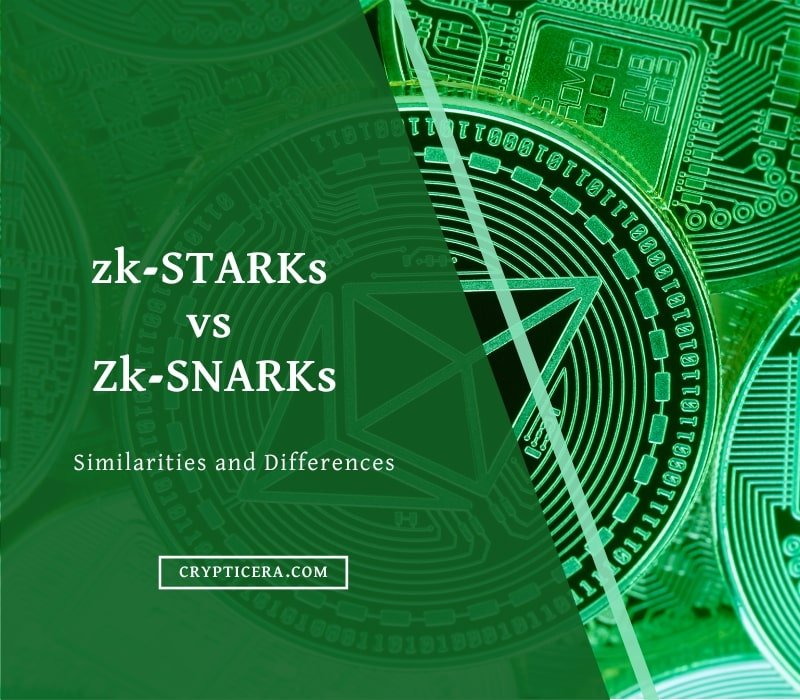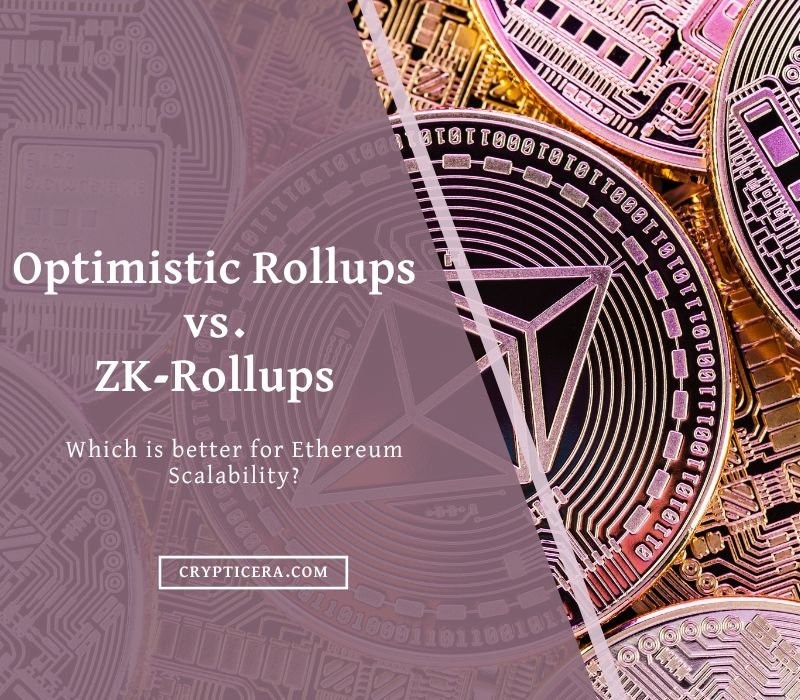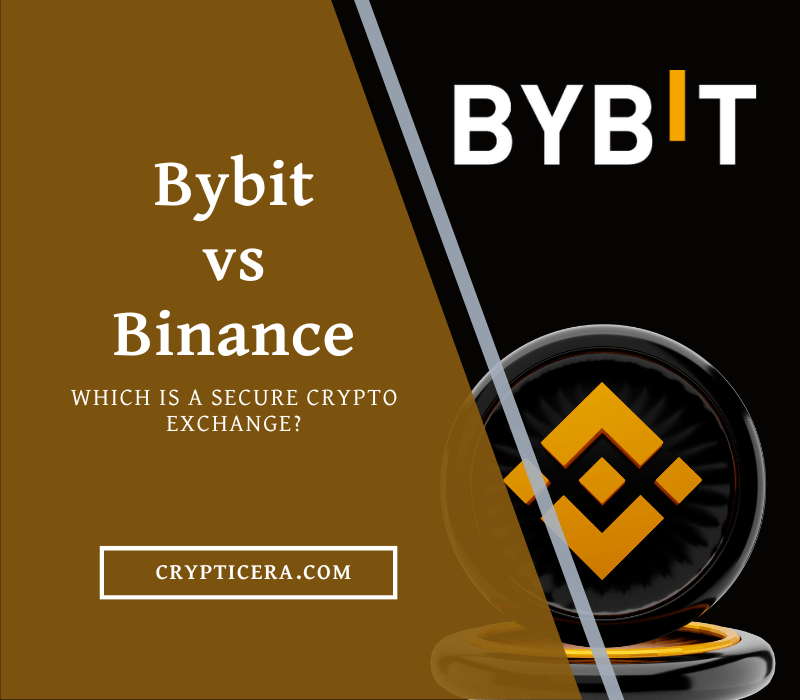The cryptocurrency world is buzzing with the comparison between these two platforms that are changing the game with their unique features and advancements.
With Ethereum 2.0 on the horizon and Solana breaking records with its speed and efficiency, it’s no wonder why people are eager to compare the two.
Ethereum is a decentralized, open-source blockchain platform with a focus on smart contracts, while Solana is a high-performance blockchain platform for high-speed decentralized applications.
In this blog post, we delve deep into the world of Ethereum vs Solana, exploring their strengths, weaknesses, and the impact they’re having on the blockchain and transactions landscape.
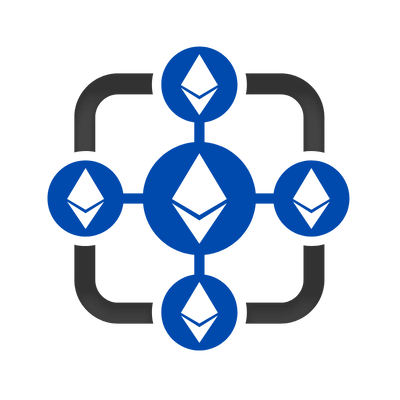
Ethereum vs Solana: Blockchain 101
- Ethereum uses a PoW mechanism for consensus. Miners compete to solve complex problems and validate transactions. On the other hand, Solana uses a PoS mechanism, where nodes are chosen based on the number of tokens they hold.
- Ethereum has a low transaction throughput of 15-20 per second. Solana boasts a maximum throughput of 65,000 per second, making it much faster.
- Ethereum’s block time is 15 seconds. Solana has a block time of 400 milliseconds, leading to faster transaction confirmations.
- Ethereum has limited scalability. Solana claims to have unlimited scalability, as its architecture supports high transaction throughput.
- Ethereum supports Solidity and Vyper. Solana supports Rust, C, and C++. This means developers can choose the language they prefer.
| Feature | ETH | SOL |
|---|---|---|
| TPS | 15-20 tps | 65,000 tps |
| Block Times | average of 15 sec | less than 1 sec |
| Algorithm | PoS | PoH + PoS |
| Market Cap | $204,190,079,143 | $9,298,748,316 |
| Pros | – older blockchain – developer-friendly – more DApps | – Low transaction fees – High scalability – fewer Dapps |
| Cons | – High transaction fees – slow transaction speed | – Newer blockchain – In Beta mode – less developer tested |
1. Consensus Mechanism
Ethereum uses Proof of Stake (PoS). In PoS, validators are selected randomly to validate transactions and create new blocks. The selection is based on the number of tokens they hold and is willing to lock up as collateral.
The more tokens a validator stakes, the higher their chances of being selected. If a validator acts maliciously, they will lose their staked tokens. This incentivizes validators to act honestly since they have a financial stake in the network. PoS is considered more energy-efficient than Proof of Work (PoW), used by Bitcoin.
Solana uses Proof of History (PoH). In PoH, a cryptographic proof of the current time is generated and broadcast to the network. This proof can be used as a reference for all transactions, allowing the network to reach a consensus without a central authority or intensive computational work. PoH Generators generate and broadcast these time proofs.
These proofs are then used to validate transactions and create new blocks. This allows Solana to maintain security and decentralization while achieving high transaction throughput.
2. Programming Language
Ethereum uses Solidity and Vyper as its primary programming languages. Solidity is an object-oriented, contract-based language. Its syntax is similar to JavaScript. It is widely used to write smart contracts on the Ethereum network.
Vyper, on the other hand, is a simple, fast, and secure Python-based language. It is used for smart contract execution on the Ethereum network.
Solana, on the other hand, supports Rust, C, and C++ as its primary programming languages. Rust is a modern and secure language, widely used for developing applications and systems.
C and C++ are two popular programming languages that are known for their high-performance and low-level systems. These languages are used for writing smart contracts and other applications that run on the Solana network.
3. Transaction Speed
Transaction speed is a crucial factor when comparing blockchain platforms. It determines the efficiency of a blockchain network in processing transactions and the number of transactions it can handle at a time.
Ethereum was launched in 2015 and has a transaction speed of 15-25 TPS. This speed is considered slow compared to other blockchain platforms and is one of Ethereum’s major bottlenecks. The low transaction speed is due to the high computational demand of its consensus mechanism, Proof of Stake (PoS), and its architectural design that prioritizes security and decentralization over speed.
Solana, launched in 2020, has a transaction speed of 65,000 TPS. This speed is achieved through its unique consensus mechanism, Solana’s Proof of History (PoH). It reduces computational demand and allows for faster processing time. Solana’s architecture is designed specifically for high-speed transactions and scalability, making it one of the fastest blockchain platforms in the market.
4. Transaction Cost
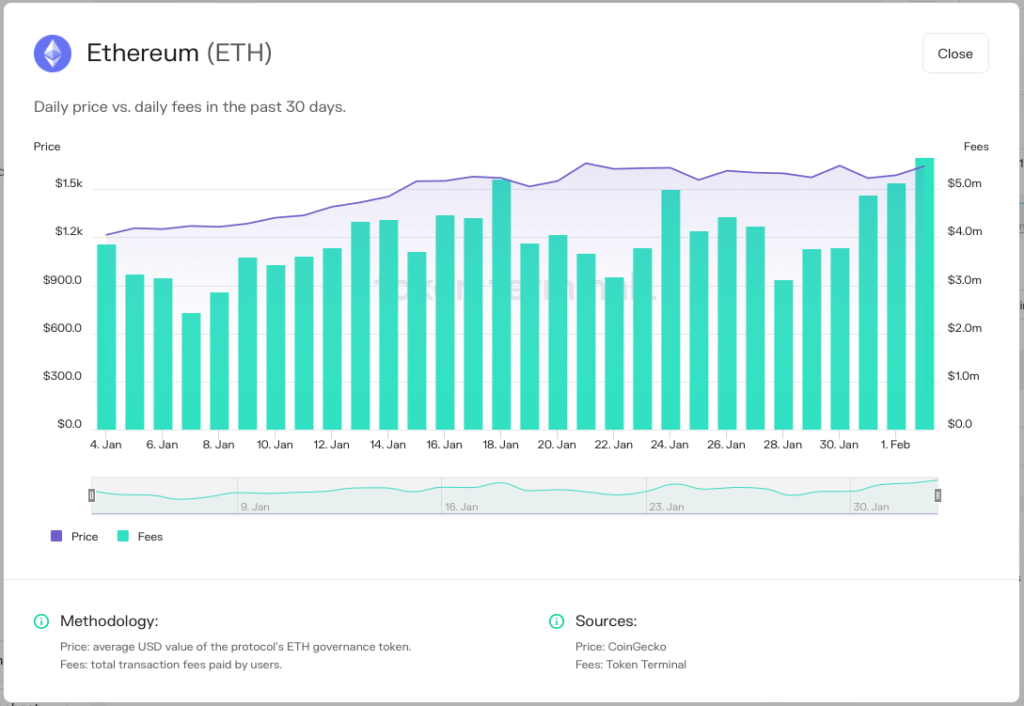
Gwei is a unit of measure for gas fees in the Ethereum network. It is used to calculate the cost of executing a transaction on the Ethereum blockchain. Currently, the average gwei fee is around 500 gwei, which is equivalent to 0.000005 ETH.
This means that a user would need to pay around 500 gwei or 0.000005 ETH to complete a simple transaction like transferring funds from one address to another.
Solana uses its native token, SOL, to pay for transactions and currently charges 0.000005 SOL per signature, which is significantly lower than Ethereum’s fees.
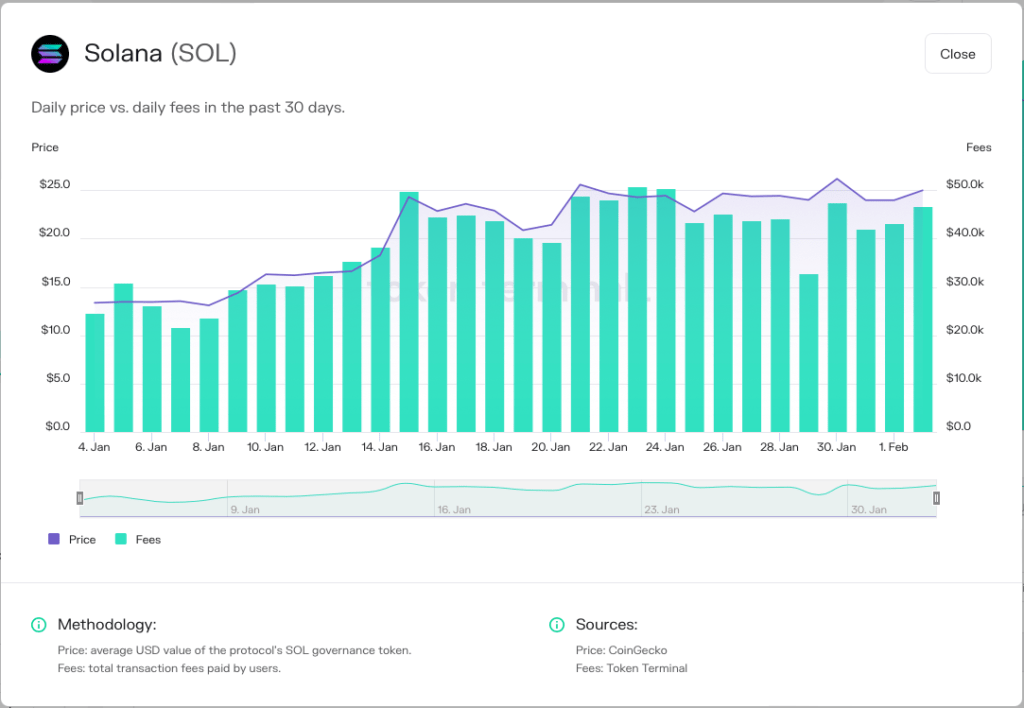
5. Network Size and Validators
Solana’s network design is unique in that it uses a smaller maximum transmission unit (MTU) size of 1280 bytes, which leaves only 1232 bytes for actual data like serialized transactions after accounting for headers. Even though there are over 1,9003 nodes producing blocks, this doesn’t mean there are 1,900 separate entities running each node. Some businesses run multiple validators on different chains.
On the other hand, Ethereum has a much bigger network with over 500,000 validators. However, joining this network requires downloading a massive 658 GB of data to sync with its blockchain database.

Ethereum vs Solana: Ecosystem
- Decentralized Finance Ecosystem
- NFT Marketplaces
- Top Crypto Projects on Ethereum and Solana
Defi Ecosystem
Ethereum and Solana have active decentralized finance (DeFi) ecosystems and support a wide range of DApps.
Ethereum is the most widely used blockchain platform for DeFi, with a large and growing ecosystem of dApps and protocols.
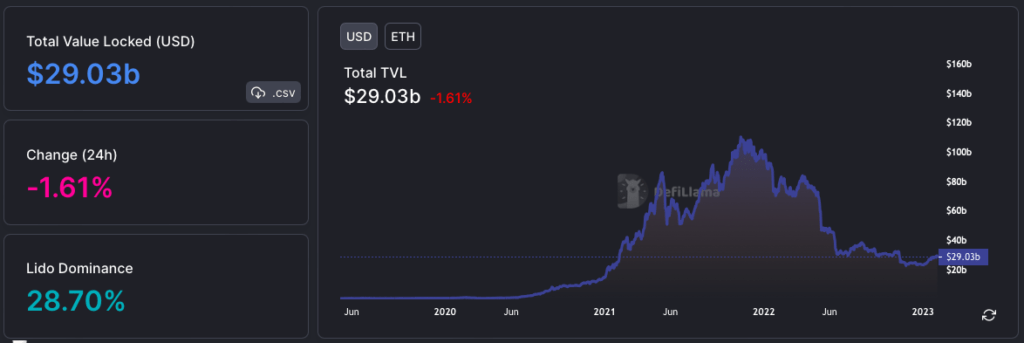
Some of the most popular DeFi apps on Ethereum include-
- Lido Finance
- Maker DAO
- AAVE
- Curve Finance
- Convex Finance
- Uniswap
Solana also has an active DeFi ecosystem, with several dApps and protocols that are built on the Solana platform. Some examples of DeFi apps on Solana include Serum, a decentralized exchange, and Raydium, a decentralized automated market maker.

It is worth noting that the specific dApps and protocols available on each platform can change over time, as developers continue to build and launch new DeFi applications. Additionally, some dApps may be available on both Ethereum and Solana, while others may only be available on one platform.
NFT Marketplaces
Both Ethereum and Solana support non-fungible tokens (NFTs), which are digital assets that are unique and cannot be replaced or interchanged. NFTs are often used for collectibles, digital art, and other forms of digital scarcity.
Ethereum is home to a large and vibrant NFT market, with several popular NFT marketplaces and dApps. Some of the most well-known NFT marketplaces on Ethereum include OpenSea, Rarible, and Foundation.
Popular NFT Collections on the Ethereum blockchain are-
- Bore Ape yacht Club (BAYC)
- CryptoPunks
- Trump Digital Trading Card
- Azuki
- Doodles
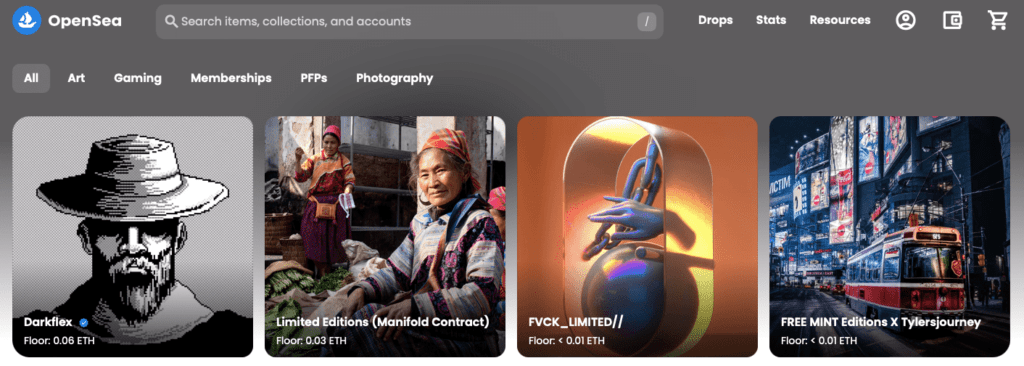
Solana also has a growing NFT ecosystem, with several dApps and marketplaces that are built on the Solana platform. Some examples of NFT marketplaces on Solana include Synergy, a marketplace for sports collectibles, and Gala Games, a marketplace for digital assets and games.

Popular Collections on Solana blockchains are-
- Degods
- Degenerate Ape Academy
- Immortals
- y00ts
- Okay Bears

Real-World Use Cases of Solana and Ethereum Blockchains
Ethereum is a platform for decentralized applications, non-fungible tokens, and decentralized finance, while Solana provides fast, low-cost transactions suitable for decentralized exchanges, gaming, and supply chain management.
Ethereum Use Cases
- Decentralized Applications (dApps): Ethereum provides a platform for developers to build decentralized applications on its blockchain. These dApps can range from decentralized exchanges to prediction markets and games.
The advantage of dApps on Ethereum is that they are decentralized. This eliminates the need for intermediaries and reduces the risk of censorship.
- Non-Fungible Tokens (NFTs): Ethereum has become popular for NFTs, which are unique digital assets representing anything from art to collectibles.
NFTs on Ethereum is secure and decentralized, making it the go-to platform for NFT transactions.
- Decentralized Finance (DeFi): Ethereum is home to the majority of decentralized finance applications and protocols.
DeFi protocols provide financial services that are open, transparent, and accessible to anyone with an internet connection. These services include lending and borrowing, stablecoins, and yield farming.
Solana Use Cases
- Decentralized Exchanges (DEXs): Solana provides fast and low-cost transactions, making it ideal for decentralized exchanges.
These DEXs offer secure trading of cryptocurrencies without intermediaries, making them ideal for large-scale trading.
- Gaming: Solana’s high transaction speeds are suitable for gaming applications.
Games built on Solana’s blockchain can offer fast and secure in-game transactions, making it a popular choice for blockchain-based games.
- Supply Chain Management: Solana provides fast and secure transactions, making it ideal for supply chain management applications.
By tracking goods on the Solana blockchain, supply chain participants can improve transparency and reduce the risk of counterfeits, while also improving the speed and efficiency of operations.

Building DApps on Ethereum and Solana
To build dApps on Ethereum, developers can use its native programming language, Solidity, and its development tools like Truffle, Remix, and Infura. On Solana, developers can use JavaScript, TypeScript, and Solana’s development tools like Serum. Both platforms provide robust developer communities, documentation, and tutorials to help developers build and launch their dApps.
Building DApps on Ethereum using Solidity
Building dApps on Ethereum requires a solid understanding of the Ethereum blockchain, its programming language Solidity, and its development tools. Here is a step-by-step guide to building dApps on Ethereum:
- Understanding Ethereum and Solidity: Before building a dApp, it’s important to understand the Ethereum blockchain, its architecture, and its programming language, Solidity. Ethereum is a decentralized platform for building decentralized applications, while Solidity is a contract-oriented programming language used to write smart contracts on the Ethereum blockchain.
- Setting up the development environment: To build a dApp on Ethereum, you need to set up a development environment. This includes installing a local Ethereum blockchain client such as Geth or Parity, a code editor like Visual Studio Code, and a Solidity compiler.
- Writing the Smart Contract: The smart contract is the backbone of your dApp and defines the rules and conditions of the application. Smart contracts are written in Solidity and are executed on the Ethereum blockchain.
- Deploying the Smart Contract: Once the smart contract is written, it needs to be deployed to the Ethereum network. This requires using a deployment tool such as Remix, Truffle, or Remix-IDE.
- Interacting with the Smart Contract: After the smart contract is deployed, it can be interacted with using a web3 interface such as Web3.js. This allows developers to read and write data to the smart contract from a front-end interface.
- Building the front-end: The final step in building a dApp is to build the front-end interface. This is typically done using HTML, CSS, and JavaScript, allowing users to interact with the dApp.
Must Read: Building To-do List App on Ethereum in 15 Minutes
Building DApps on Solana Using Rust
Building an app on Solana requires the following steps:
- Installation of necessary tools: To build an app on Solana, you will need to have the Rust programming language and Solana CLI installed on your computer. You can install Rust by following the instructions on the official Rust website, and you can install Solana CLI by following the instructions in the Solana documentation.
- Setting up a Solana project: To start a new Solana project, you can use the Solana CLI to create a new project using the following command: “solana-create-project [project_name]”. This will create a new project directory with the necessary structure and files for your app.
- Define your app’s logic: Next, you will need to write the Rust code that defines the logic of your app. You can use the Solana SDK to write the code for your app, which provides a set of Rust libraries that make it easy to interact with the Solana blockchain.
- Compile the code: Once you have written the code for your app, you will need to compile it using the Rust compiler. You can do this by running the “cargo build” command in your project directory.
- Deploy the app: To deploy your app to the Solana network, you will need to create a Solana program. A Solana program is a smart contract that runs on the Solana blockchain and implements your app’s logic. You can create a Solana program by using the Solana CLI to compile your Rust code into a Solana program binary file.
- Test the app: Before you deploy your app to the Solana network, it is a good idea to test it locally. You can do this by using the Solana CLI to run a local Solana network on your computer and then deploying your app to this local network.
- Deploy to the main Solana network: Once you are satisfied with the performance of your app in the local test network, you can deploy it to the main Solana network. To do this, you will need to use the Solana CLI to create a Solana transaction that deploys your app to the network.
These are the basic steps for building an app on Solana. It is important to note that the exact process may vary depending on the specifics of your app, and you may need to consult the Solana documentation and community for further guidance.
Conclusion
Ethereum has attracted a loyal following of supporters who are confident in the protocol’s ability to prosper. Because it has served as the foundation of Defi, it has a unique value in the ecosystem that cannot be substituted.
Solana is the “latest craze” that, despite its rapid development, is still finding its feet. It’s difficult to predict which blockchain will win in the long run, but Ethereum has a far better chance because it’s been there for so long.
FAQ
which is a better investment- Solana or Ethereum?
Lower market cap coins have a high gaining probability in a bull market, Solana has a low market cap but Solana is still in the Beta version. so, we can see some network and transaction issues over time. Hence, According to me, Ethereum is still a better investment than Solana, not financial advice.
Can Solana overtake Ethereum?
Solana still lags behind Ethereum in terms of Dapps and mainstream adoption. But Ethereum gas fees are a big issue for the Ethereum blockchain. Hence, it would be difficult for Solana to overtake Ethereum in Marketcap.
Is Solana the next Ethereum?
yes, Solana provides all services of Ethereum with low gas fees and high transaction speed. It has its dedicated NFT Marketplaces and Dapps.
Is Solana has high transaction speed than Ethereum?
yes, Solana offers 59000 tps whereas Ethereum offers 17 tps.
Can I run a dApp on both Ethereum and Solana?
Yes, it is possible to run a dApp on both Ethereum and Solana. However, the dApp will need to be written in a programming language that is supported by both platforms, such as Solidity or Rust. Additionally, the dApp will need to be compatible with the specific features and capabilities of each platform.
Can I transfer tokens from Ethereum to Solana?
Yes, it is possible to transfer tokens from Ethereum to Solana. However, this typically requires the use of a special bridge or gateway that is specifically designed to facilitate the transfer of tokens between the two platforms. These bridges are typically built and maintained by third-party developers, and the process for transferring tokens can vary depending on the specific bridge being used.
